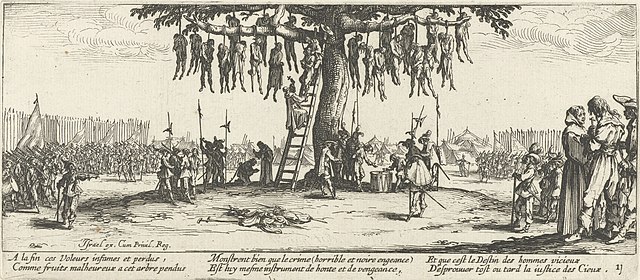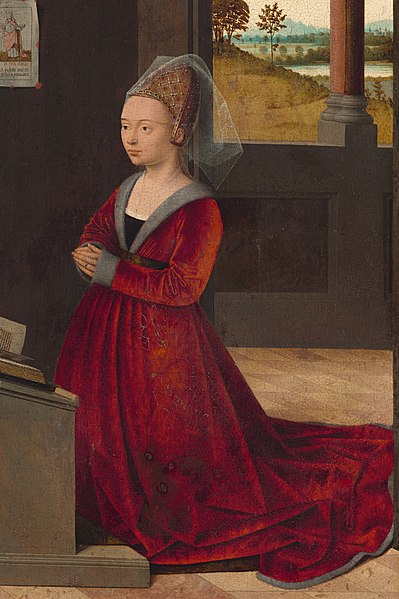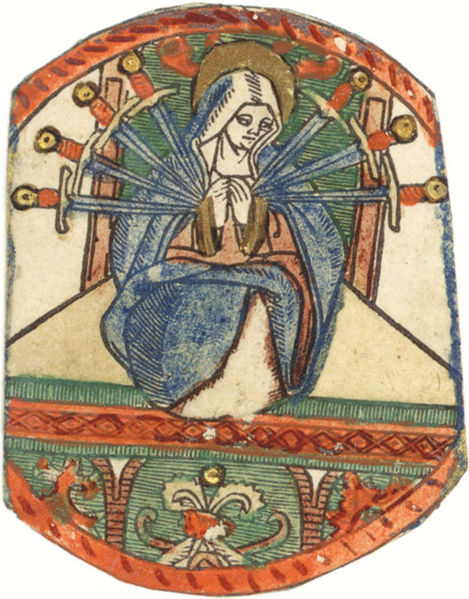Jacques Callot was a baroque printmaker and draftsman from the Duchy of Lorraine. He is an important person in the development of the old master print. He made more than 1,400 etchings that chronicled the life of his period, featuring soldiers, clowns, drunkards, Romani, beggars, as well as court life. He also etched many religious and military images, and many prints featured extensive landscapes in their background.
Jacques Callot, Lucas Vorsterman the Elder after Anthony van Dyck
The Large Hunt, a famous technical showpiece
Massacre of the Innocents, showing the use of multiple stoppings-out to create the fainter lines of the distant view. 13.7 x 10.5 cm
One of Les Grandes Misères de la guerre
An old master print is a work of art produced by a printing process within the Western tradition. The term remains current in the art trade, and there is no easy alternative in English to distinguish the works of "fine art" produced in printmaking from the vast range of decorative, utilitarian and popular prints that grew rapidly alongside the artistic print from the 15th century onwards. Fifteenth-century prints are sufficiently rare that they are classed as old master prints even if they are of crude or merely workmanlike artistic quality. A date of about 1830 is usually taken as marking the end of the period whose prints are covered by this term.
The Three Crosses, drypoint by Rembrandt, 1653, state III of IV
Melencolia I, 1514, engraving by Albrecht Dürer
This donor portrait of about 1455 shows a large coloured print attached to the wall with sealing wax. Petrus Christus, NGA, Washington.
Anonymous German 15th-century woodcut, about 1480, with hand-colouring, including (unusually) spots of gold. 5.2 x 3.9 cm (similar to the original size on most screens)








